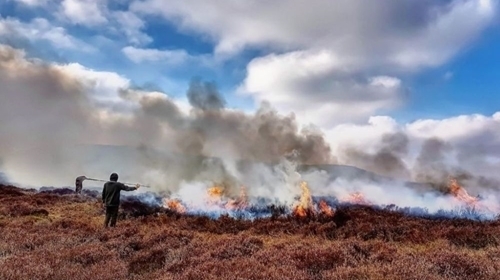
Earlier this month, the High Court rejected an application for judicial review of Defra’s burning regulations. Their legal challenge, launched in July, claimed that because there is no map to identify where such peat is deeper than 40cm, the rules can’t be enforced.
The core of the campaign group’s challenge came from one source – a report from the Climate Change Committee (CCC) published four months after the latest regulations were approved by Parliament. This report is held up by those calling for an end to burning as having all the answers, but it (and Wild Justice) does not clearly lay out the evidence for this position.
Not only does the report not clearly show its working out, it acts as if we already have all the answers. To make big decisions, it’s important that we satisfy ourselves that we know have substance to back them up. So far, the CCC is yet to explain how it reached its conclusion on controlled winter burning.
We’re not the only ones questioning it.
In his response to the application from Wild Justice, the Honourable Mr Justice Dove stated that the CCC report ‘does not provide an arguable basis on which to contend that the Burning Regulations when they were made failed to have regard to climate change and the associated need to take action’. He also stated that ‘I do not accept that it is arguable that without a map the Burning Regulations cannot be enforced’ and correctly pointed to public sources from regulators and the Wildlife Trusts as part of the justification for a limit of 40cm depth.

Andreas Heinemeyer, Senior Researcher at the University of York’s Stockholm Environment Institute, responded to the ruling on Twitter, stating that it “seems we really need some actual and robust evidence on impacts on carbon.” He should know. Not only does he have over 15 years expertise in the impacts of moorland management on carbon, but he also leads Defra’s long-term study on peatland management and ecosystem services in the UK. There is a reason Defra has spent a considerable sum of money on this study. In their own words, to provide in depth understanding of the management implications on key ecosystem services related to biodiversity, carbon, greenhouse gases and water.
This is a live situation and one we’re yet to find all the answers to before making big decisions that affect not only our countryside, but livelihoods and the environment.